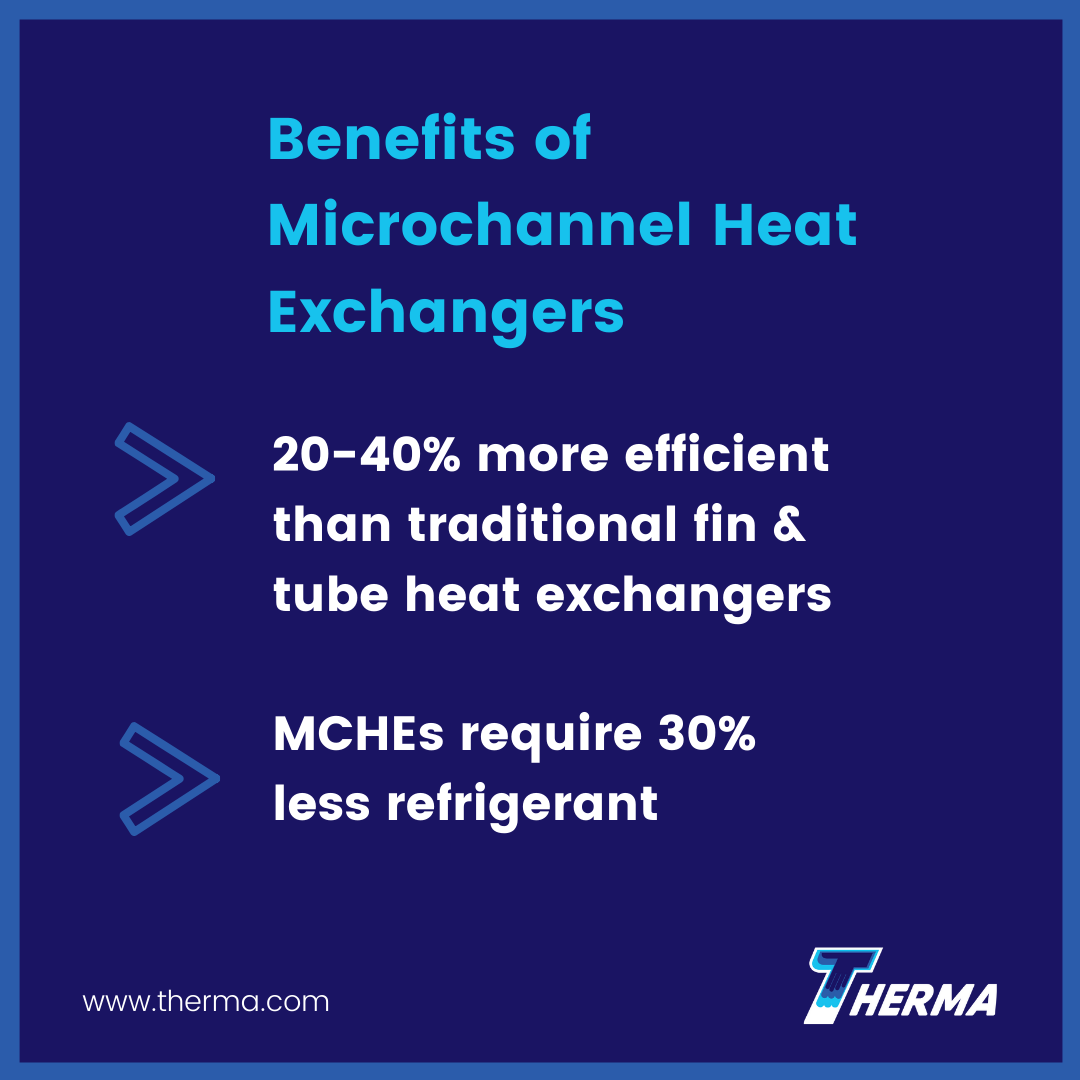Microchannel heat exchangers (MCHE) have made their move into the HVAC industry. Redesigned to target the needs of HVAC systems, these heat exchangers improve efficiency and cost savings for owners, managers and occupants.
Introducing Microchannel Heat Exchangers (MCHEs)
MCHEs are a variation of fin and tube heat exchangers. At least one fluid, usually refrigerant or water, flows through tubes or enclosed channels while air flows cross-current through the connected fins. The hydraulic diameter of the channels is less than 1 mm.
Transportation and chemical processing industries have used MCHEs for decades. The drive for improved efficiency led to their introduction into HVAC systems. However, use in HVAC has required several design changes which have developed only recently.
Current manufacturers focus on all aluminum materials and brazing construction. Using a single material for construction produces a consistent rate of heat transfer. The high temperatures used in brazing produces a strong metallurgical alloy at the joins. These methods reduce resistance to heat transfer.
Other design changes focus on ways to limit condensation, corrosion and improving fluid flow. The size of the headers and the number and orientation of the microchannels vary depending on where the heat exchanger is in the HVAC system and which fluids are transporting the heat. Some are specifically designed to handle the phase changes required in condensers and evaporators.
Benefits of Microchannels
The small hydraulic diameter of the channels leads to multiple technical benefits. The primary benefit in using MCHEs in HVAC is efficiency. Many smaller conduits provide more surface area for refrigerant-to-wall contact than larger tubes do in the same space. Increased surface area improves efficiency of heat transfer, with some manufacturers stating an improvement of 20 to 40% over traditional fin and tube heat exchangers.
Heat transfer in heat exchangers mostly occurs along the walls via conduction, while the center of the fluid takes longer to release its heat via convection. Narrower tubes reduce the bulk of fluid passing through. Convection plays less of a role in transferring the heat. So, not only is a greater percentage of the refrigerant in contact with the walls to transfer heat, but the same degree of heat transfer requires less refrigerant.
Manufacturers estimate that MCHEs require 30% less refrigerant. Since MCHEs are so much more efficient, they can be smaller (up to 30%) and weigh less (60% less) than comparable heat exchangers. Their size and efficiency mean that smaller fans can be used and lower overall energy use of the system. An added benefit to smaller fans is less noise. MCHEs allow more flexibility in layout and design without worrying about noise complaints.
Microchannel Heat Exchangers Are Not Perfect
Two disadvantages are worth noting. Condensate can interfere with efficiency by blocking air flow through fins. Another issue is refrigerant flow distribution. Design features to address these problems include channel orientation, fin design and spacing, and baffles or holes within headers to control flow.
With the benefits to efficiency, the use of MCHEs in HVAC will increase. The cost of raw materials for manufacturing and the cost of refrigerants will impact market growth. Copper, which is used in traditional fin and tube heat exchangers, is more expensive than aluminum. Additional savings from reduced refrigerant hold-up also encourages businesses and facilities to choose MCHEs over traditional heat exchangers for their HVAC needs.
Compared to other industries, the market for MCHE in HVAC services is relatively new. Facilities managers and building owners stand to save significantly from the use of MCHEs in their HVAC systems. Manufacturers have redesigned these heat exchangers to maximize heat transfer properties, reduce the costs of making and using the units and cut the space needed for HVAC systems.








